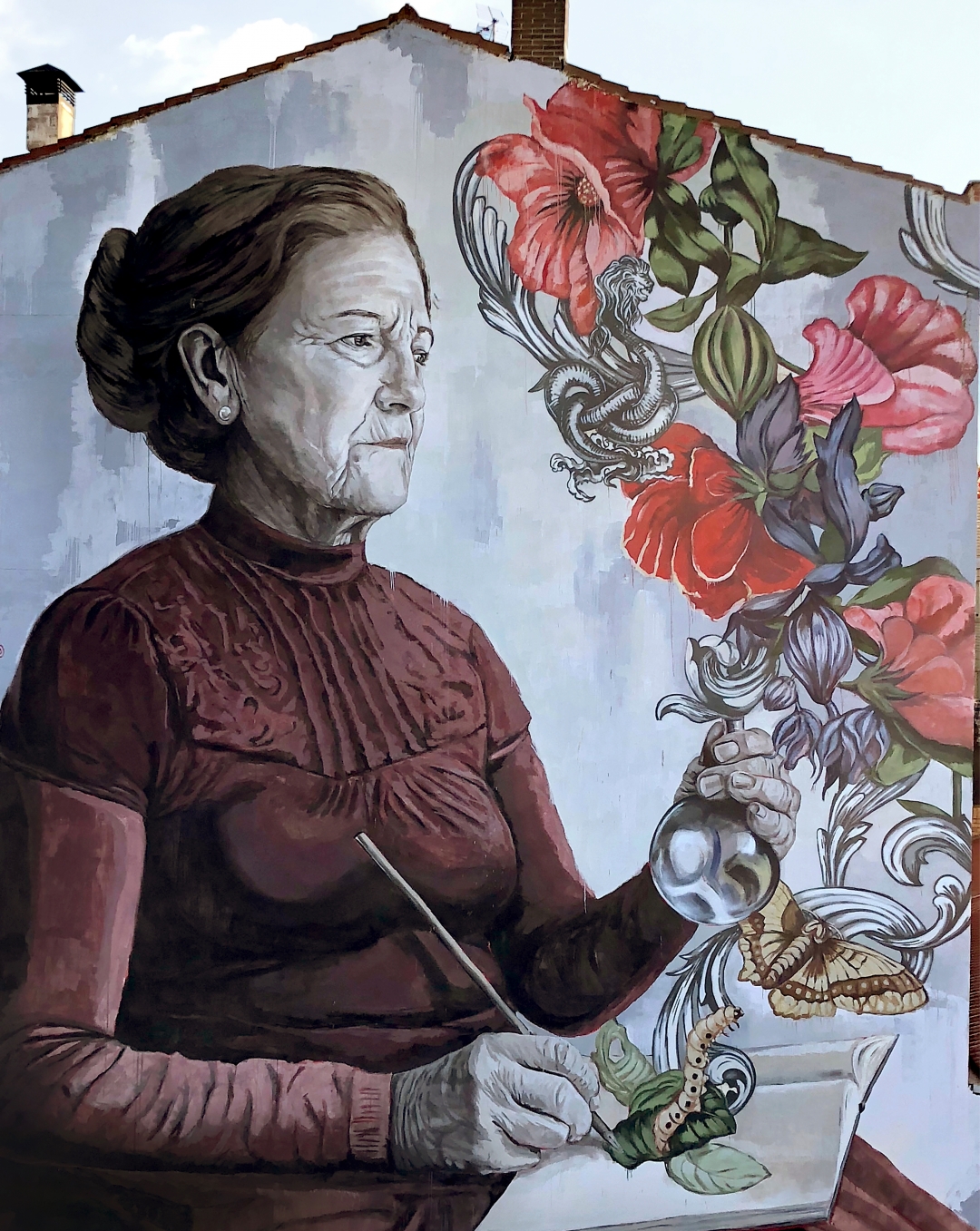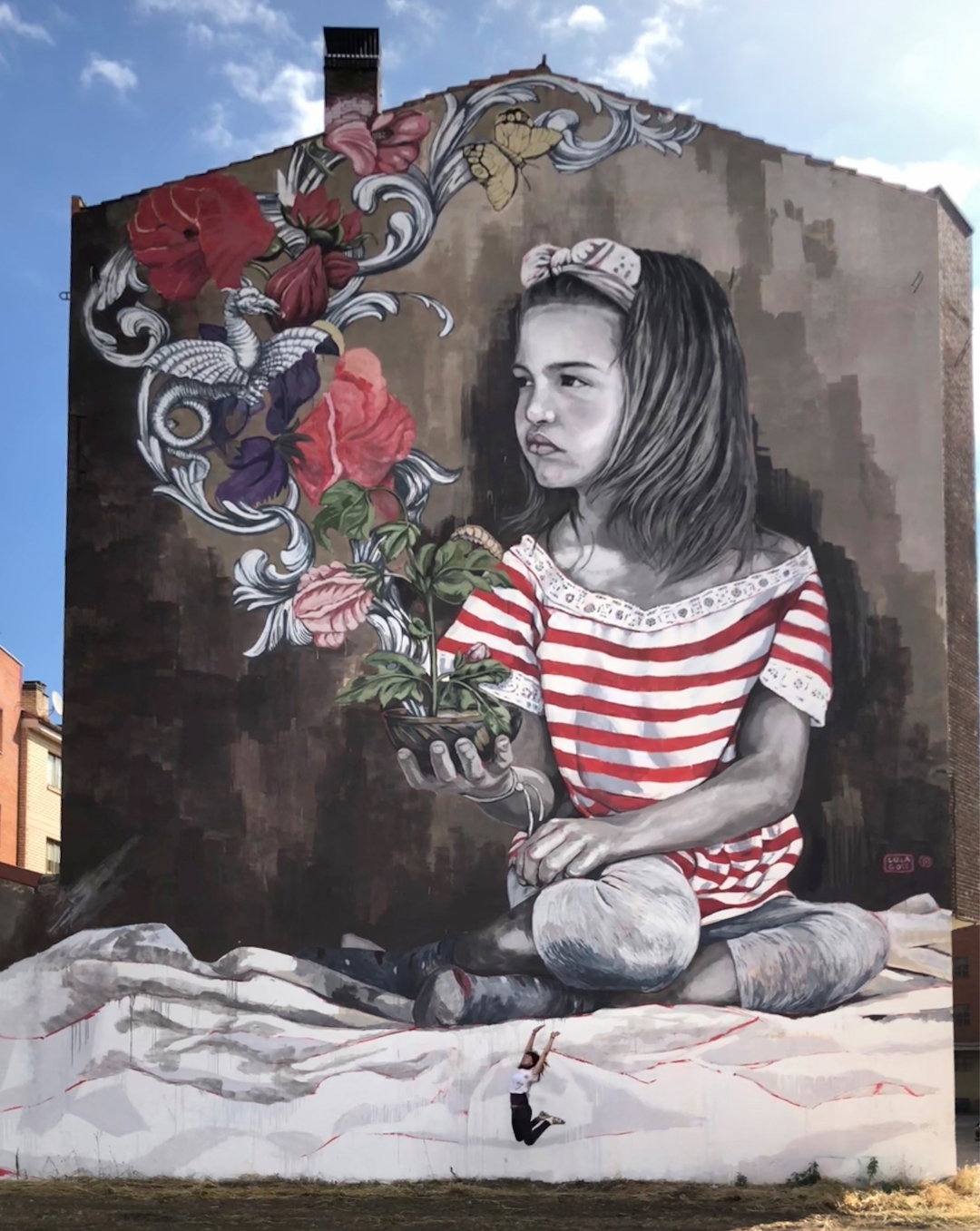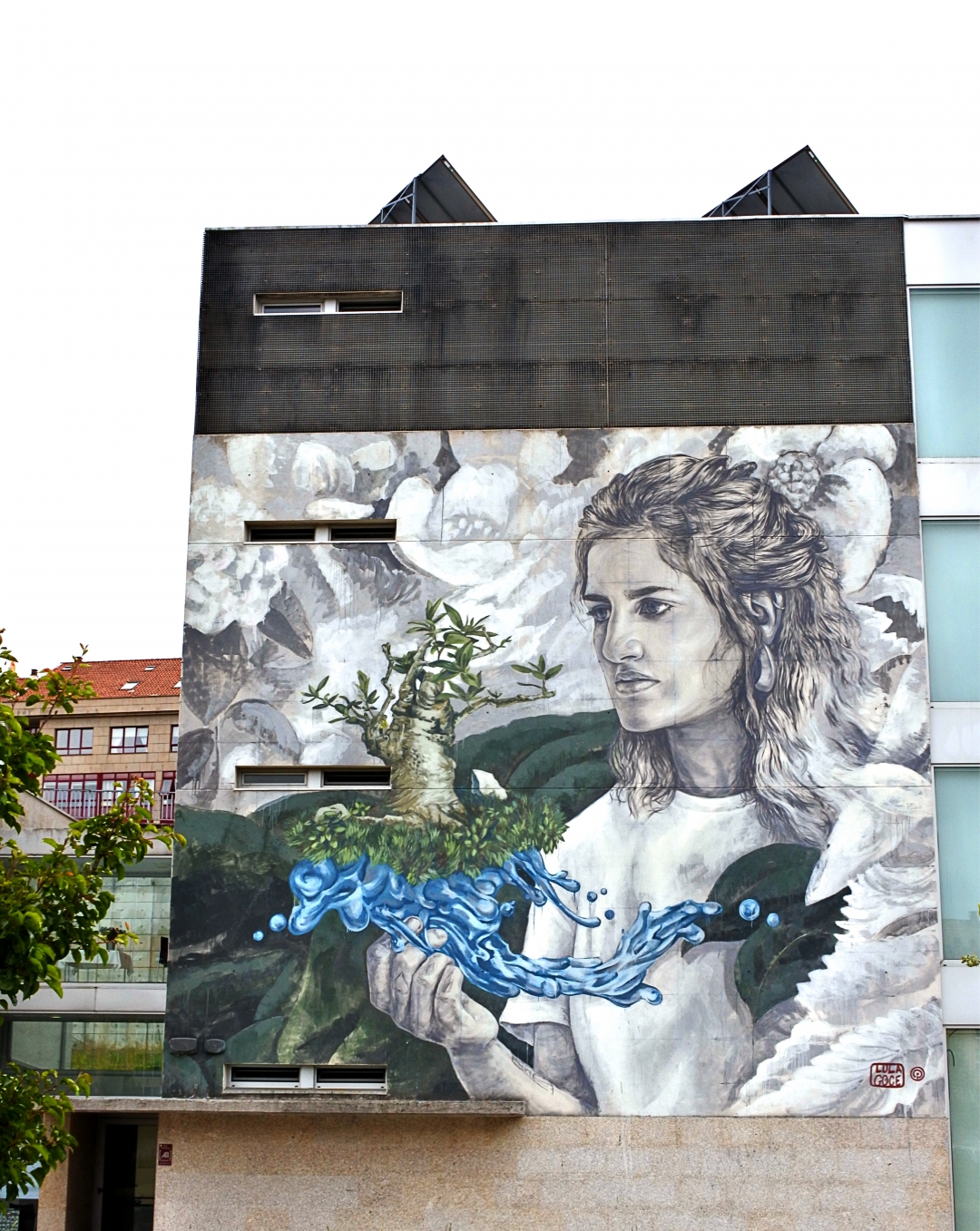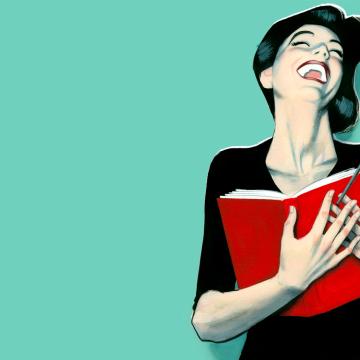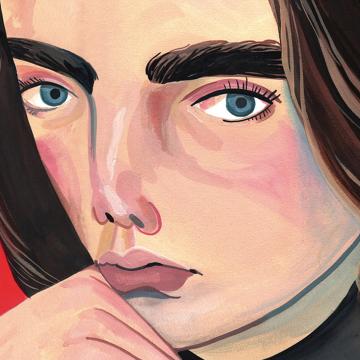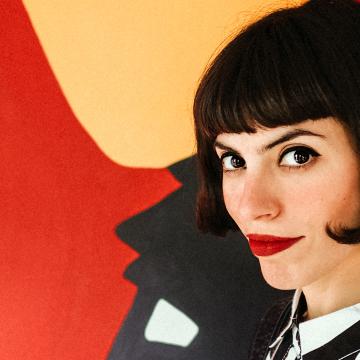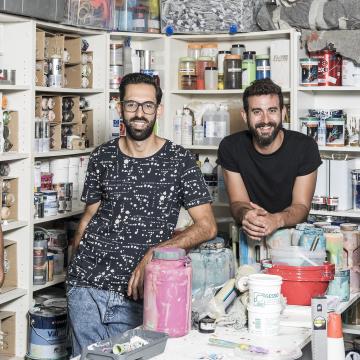Talent for comics and graphic novels is endless in Spain. Paco Roca, Ana Penyas, Paco Sordo, María Medem, Juanjo Guarnido, Teresa Valero… Do you want to get to know some of the best illustrators in the country?
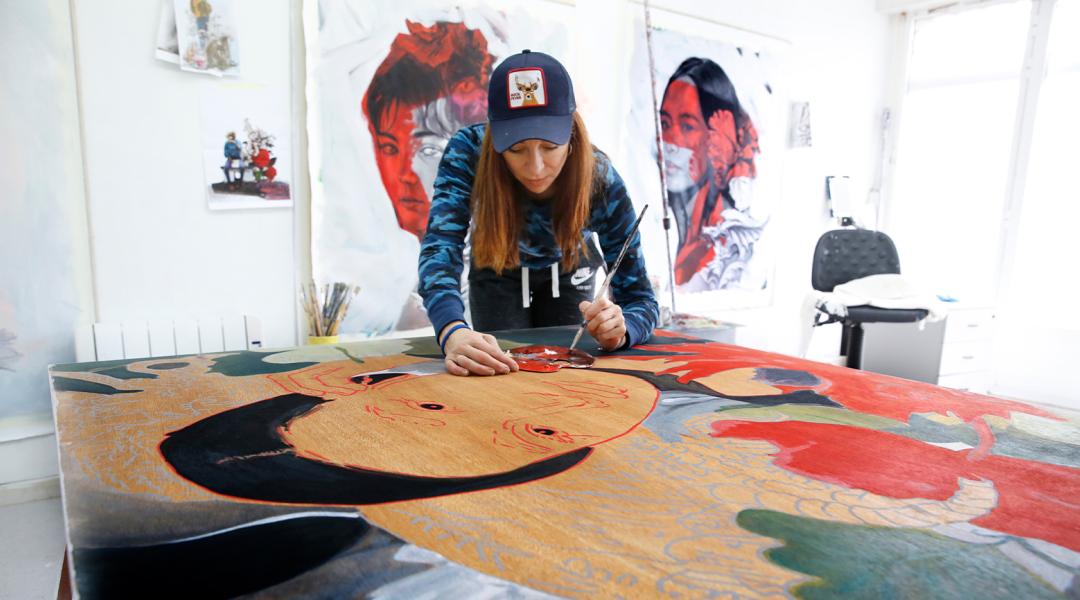
Spain, Belgium, Germany, Italy... The girls, women and natural elements that fill Lula Goce’s work are being flaunted by façades around the world, including the mecca of street art, New York. Additionally, two of her pieces are on the list of the 100 best graffito in the world.
To the beat of chillout, techno or Camarón, Lula Goce goes up a crane to breathe new life into the walls where she leaves her mark and message. The portrait of actor Blanca Suárez, illustrated at the end of 2019 on a building in the Bronx, or the one of her comrade Javier Rey playing the role of drug dealer Sito Miñanco (seen in a scene of the series Fariña), have given this Galician artist greater international impact within the last year. Now, also, two of her murals have been selected by the team from specialised magazine and one of the bibles of urban art, Streetart360, for their new worldwide top 100.
Are you part of that crew of muralists that started painting graffiti?
No, in the 80s spray paint didn’t reach Galicia (laughs). We’d go out with pots of paint and worked differently. Typical graffiti artists are more recent. Yes, I've painted with spray cans illegally, but not in the sense of a graffiti artist. I studied Fine Arts specialising in paint, I’ve done graphic design and illustration, I have a master’s degree... That is, I come from a much more academic than underground background, with a more reflexive approach than mere urban intervention. I don’t only paint a wall; I keep in mind the social setting and those who are part of it, that’s why I do research beforehand.
Urban art tends to be simplified into the graffiti technique. Why?
Urban art existed long before graffiti, although with other nuances; roundabout sculptures are also urban art. Many artists come from that world, but we can’t simplify all urban art into graffiti. As artists, we’ve always used the support that surrounds us as part of our work, and it seems like muralism didn’t exist before graffiti, when walls have been painted since the time of the Neanderthals in Altamira.
By this rule of three, we can say that Lula Goce is a muralist.
I prefer to consider myself an artist, which is a broader term. I incidentally develop my work in an urban setting because I make murals within a certain social and geographic context, but I don’t consider myself a muralist.
What’s the difference between a personal project and an assignment for you?
Each project is unique because it’s designed for a specific space and context. Obviously, it’s different if the assignment is for a company or a town hall, for example. It’s hard to have complete freedom to do what you want, and although I try to give all my projects my own twist, there are always things that condition it. Urban art has a commitment to the space and to who pays for it, the producers, the festivals themselves, or even the owner of the house that is being painted. They’re the ones that set down the rules.
What do you think about the fact that urban art has become a worldwide business, with multinationals involved?
We could talk all day about this. I guess it’s because of the capacity that capitalism and market economy have to take something from the outskirts, beat it and sell it as a product. If you live in a capitalist society you have to be a cog in the machine and, if you want something, you need money to pay for it. That’s the way it is. It’s normal for brands to enter urban art, because they’ve always done it with art in general; Velázquez or Goya’s paintings were institutional works, the Sistine Chapel, the great works from classical Greece or ancient Rome... We’ve always worked for money.
Do you need a special talent to do what you do?
An artist combines qualities and abilities. You can be an artist because you do great work that works on its own, because you’re good at selling yourself or because you surround yourself with people that do a good job selling you. For example, independently of whether he is good or not, Okuda is very well promoted. Of course, you need talent to be an urban artist, but today art has many fields of action.
Over time, does a piece make you feel the same as when you painted it?
Feelings change because I go through many phases during a week stuck to a wall. My mood, the season, the weather... also affect me. When I’m near the end of a piece, I start to hate it, but I think it’s because of how tired I am after a week against a wall holding my hand up. But with time, I revisit the piece, and I like some parts more or see details that I did a certain way at the time and that now I’d do differently.
“In very dirty or deteriorated areas I paint nice things to try to change the image of that place. The synergy that occurs is lovely”
What inspires you?
I’m inspired by nature, but in a metaphorical sense: thinking about connecting to each other as natural individuals that are part of the Earth’s machinery. We’re part of ecology, although we’ve forgotten and, that’s why, in very dirty or deteriorated areas I paint nice things to somehow try to change the image of that place. The synergy that occurs is lovely because people start to love their surroundings when they see them embellished.
Urvanity in Madrid, the ArtAeroRap festival in La Bañeza, Avant-Garde in Tudela... There are more and more fairs and events in Spain. Is this a good country for street art or do we still have a lot to learn from countries like the United States?
When it comes to fairs, the United States are the leaders and they keep the figure of the artist at the forefront. They respect and admire creativity in any area, they invest a lot in art and there’s a much bigger market in every sense. In Spain, there’s a good talent pool of urban artists partially thanks to the climate and the many spaces that need a coat of paint after the boom in construction in the 80s. Unlike in the US, in Spain and Europe there’s a connection between classic art and urban art that comes from the historical importance of Greco-Latin tradition. The difference is subtle, but you can tell with certain European and American artists.
How has the fact that you’re a woman in a sector full of men, such as urban art, affected you?
It definitely hasn’t benefited me. Art in general is a masculine world, where 98% of worldwide exhibitions are male, investors hardly ever buy female art and to be highly recognised we have to work much harder. Urban art may be different, because now there’s popular acclaim and it seems easier to appear as a woman. Nevertheless, I still receive messages where they think I’m a guy because they can’t believe that a woman would paint such big murals alone. I don’t take it personally, although it’s something that has to change. I make art, independently of my gender.
Which other female artists do you admire?
Hyuro, Paola Delfín, Julieta XLF from Valencia, Faith47, Milu Correch … We are more and more women and there are fantastic girls out there.
